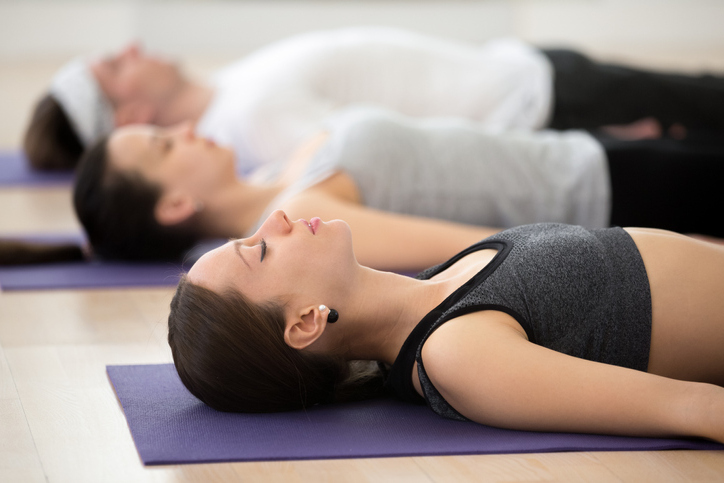Sophrology and breathing: the complete guide
Caution : You must consult your doctor for your health. This page presents only a personal and alternative point of view which should not be considered as an attempt to prescribe medicine.
Created by neuropsychiatrist Alfonso Caycedo, relaxation therapy is inspired by several sources and is expressed through various currents.
Among these different trends, there is Caycedian relaxation therapy.
It deals with methods of relaxation, psychotherapy, psycho-corporal practice, etc.

It optimizes the benefits of breathing to increase physical and psychological well-being thanks to its own breathing techniques and those inspired by Yoga.
Breathing as a tool in sophrology
An automatic function of the organism, breathing is influenced by our mental state.
Thanks to the breathing-based relaxation techniques taught by Caycedian sophrology, you can enjoy many benefits.
It helps to feel good and reduce stress, builds self-confidence and contributes to general well-being.
States of stress make breathing disorderly, shorter and taller.
We speak of ventilatory neurogenesis.
This phenomenon occurs because the ventilation activity and the sources of stress all reside in the brainstem.
In sophrology, it is important to know how to breathe well to minimize the negative effects of negative emotions on the body.
Thanks to the breathing techniques taught in sophrology, you can re-educate your respiratory system and enjoy its benefits.
Relationship between breathing and stress
With the breathing procedures used in sophrology, the state of stress can be treated effectively.
Indeed, stress is a normal reaction of the body in case of danger.
It follows the secretion of norepinephrine by the brainstem to alert the body's defenses.
Unfortunately, the state of stress has become permanent because of the strong social pressure and is a factor affecting the general well-being of a large part of the population.
It weakens the body's immune defenses and makes it vulnerable.
Thanks to the breathing techniques of sophrology, stress can be controlled and its effects controlled.
Indeed, the good breathing techniques of sophrology make it possible to balance the parasympathetic and orthosympathetic systems.
The benefits of good breathing
Breathing well has a positive impact on our physical and mental health.
In sophrology, one of the forms of good breathing consists of inhaling through the nose and exhaling slowly while deflating the abdomen sufficiently.
A natural form of breathing, it is the one used by the newborn unconsciously.
We gradually lose it in favor of chest breathing.
The latter indicates a state of fear and discomfort.
Abdominal breathing helps to oxygenate the brain and facilitates the return of blood flow to the cardiovascular level.
Unlike shallow breathing which is limited to the thorax, abdominal breathing helps in a better balance of body and mind.
It also acts on the lymphatic system and the digestive system.
It optimizes digestive functions by its massaging action on the digestive tract.
Ventral breathing promotes good relaxation and helps strengthen the immune system.
This natural method of breathing helps balance body and mind.
It calms the latter thanks to its slower rhythm which sends a slowing down message to the nervous system.
Some breathing techniques in sophrology
Several breathing techniques are used in relaxation therapy to soothe the body and mind.
Among them, there is abdominal breathing and full breathing.
Abdominal breathing
It is practiced in a sitting, standing or even lying down posture.
It facilitates the proper functioning of the digestive system and reduces back pain.
To do this effectively, you must:
- Keep your back straight, whatever position you choose
- Put both hands on your stomach
- Take a deep breath through your nose to fully inflate the stomach
- Breathe out through your nose to empty the lungs.
Full breathing
In addition to abdominal breathing, you can also practice the so-called full breathing technique.
Like the abdominal one, it can be done in a sitting, standing or lying position.
To do it, you must:
- Place one hand on the stomach and the other on the chest
- Breathe out while pulling in your stomach
- Inhale while inflating the stomach then the chest.Thanks to your hands, you will ensure to inflate first the stomach and then the chest afterwards.
When the chest swells, the shoulders rise slightly
- Exhale: when exhaling, the shoulders sag slightly.
Clearly, achieving a better state of physical and mental well-being is the goal of sophrology.
It is based on several techniques, including breathing.
The breathing techniques used by sophrology relax the body and mind, thus fighting stress to strengthen the immune system.
❤ The ultimate guide to breathing
Intermittent Breathing : Discover the method to quickly relieve your anxiety and chronic fatigue (positive effects from the first use).Read also :
Previous article : Full yogic breathing on 3 levels: benefits and dangers?
Next article : Breathing draft: causes, symptoms and solutions?

